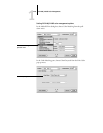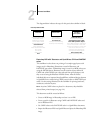
2
2-2 Simple and Advanced Workflows
RGB, CMYK, and PANTONE colors
Colors can be defined in several different color models, the most common
being RGB, CMYK, and the PANTONE color matching system. Each
model requires a different color conversion at the iR C2100/2100S. These
different color conversion workflows are explained below.
• RGB source profiles and color rendering dictionaries are used to map RGB
colors through a device-independent color space to a destination space,
either the full copier/printer gamut in a short-run printing workflow or
CMYK simulation in a color proofing workflow.
• CMYK colors are device-dependent. In a proofing scenario, colors
specified in prepress applications are adjusted so the gamut of the
iR C2100/2100S copier/printer can simulate that of the press. In a short-
run printing workflow, specifying CMYK colors according to the
calibrated copier/printer output eliminates the need for simulation during
printing.
• PANTONE spot colors are special inks manufactured to run on an offset
printing press. Spot colors can be simulated using CMYK copier/printer
toners or process color inks. Two basic workflows exist for printing
PANTONE colors to the iR C2100/2100S:
Spot Color Matching On instructs the iR C2100/2100S to match the
output of the copier/printer to the PANTONE spot color.
Spot Color Matching Off instructs the iR C2100/2100S to match the
copier/printer output to a Pantone-specified process simulation. This
CMYK combination is then printed with the CMYK Simulation setting
you choose, such as SWOP or DIC, and CMYK Simulation Method set to
Full.
Desktop versus iR C2100/2100S color management
A desktop color management system uses ICC profiles to convert colors from
one device gamut to the next (see Appendix B). The color data is converted
when it is passed from one application to another or when the job is sent to
the copier/printer, so the processing occurs on your computer as opposed to
the iR C2100/2100S.


















